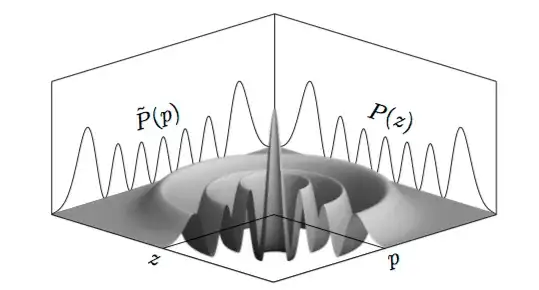The quantum harmonic oscillator $H=\frac{p^2}{2m}+\frac{1}{2}m\omega^2 x^2$ has energies $E_n=\hbar\omega(n+1/2)$, so to achieve "classical" energies $n$ must be very large.
My question is: how does appear the classical behaviour of a point mass in this potential, as energy increases? Classically, a point mass has exactly the position $x(t)=a\cos(\omega t)$, suggesting that the wavefuntion $\psi$ verifies that its square $|\psi(x,t)|^2\cong 0$ everywhere except near $x=a\cos(\omega t)$.
In this hyperphysics page appears that probability is well approximated. Taking the wave function $\psi_n$ corresponding to the energy $E_n$, with large $n$:
\begin{equation} \psi_n(x,t)=e^{-iE_nt/\hbar}\psi_n(x,0) \end{equation}
It yields:
\begin{equation} |\psi_n(x,t)|^2=|\psi_n(x,0)|^2 \end{equation}
For large energies, this quantum probability density approaches the classical probability density. But that is different than saying that $|\psi(x,t)|^2\cong 0$ everywhere except near $x=a\cos(\omega t)$!
I know that the mean value $\langle x\rangle$ does follow a sinusoidal "motion" when there is a linear combination of two or more energy eigenstates, but that is different because $\langle x\rangle$ is related to measuring $x$ a lot of times and then computing the mean value, while classically only one measure is needed. I mean, if $|\psi(x,t)|^2$ were $\cong 0$ everywhere except near $x=a\cos(\omega t)$, then, with only one measure of $x$, the result would be (in the vast majority of cases) $\cong a\cos(\omega t)$.
So, more realistically, let's consider a linear combination of states $\psi_n$ (a lot of states) all with high "classical" energies:
\begin{equation} \psi(x,t)=\sum_{n\ \text{large}}\psi_n(x,t) \end{equation}
Does $|\psi(x,t)|^2\cong 0$ everywhere except near $x=a\cos(\omega t)$, recovering the classical motion?
